EOT ARTICLES
Law Review Articles
The Employee Ownership Trust: An ESOP Alternative – For the last four decades, an employee stock ownership plan (ESOP) has been the optimal legal mechanism for transferring ownership of stock to employees in the company in which they work. A primary goal of ESOPs is often long-term employee ownership, as an ongoing employee reward program that leads to improvements in productivity and profitability and helps to ensure the longevity of the company. Unfortunately, the laws applicable to ESOPs have not kept pace with evolving trust law.
Grantor Trusts: A Path to Employee Ownership – This article outlines a method of transferring ownership of a company to employees. The specific technique used is the intentionally defective grantor trust (IDGT), a common estate-planning tool. Since 1985 the IDGT has been a reliable method for transferring assets to family members without incurring capital gains, gift, or estate taxes. IDGTs may also be applied to employee ownership.
Commentary
The British Are Coming: ESOPs and Perpetual Trusts – In the United States, the employee ownership community has its favorite example: Publix Supermarkets. Founded in 1930, Publix started an employee ownership program in 1959. With more than $34 billion in revenue, Publix now manages 193,000 employees at over 1,200 establishments across seven states in the Southeast. The British have their own favorite example of employee ownership: John Lewis Partnership (which includes the Waitrose supermarket chain). Originally founded in 1894, the popular retailer employs 88,900 associates and has been held in trust for its employees since 1929. In recent years, both conservative and liberal British governments have promoted the idea of moving to a “John Lewis economy.”
Employee Ownership Trusts: A New Model of Employee Ownership? – An employee ownership trust (EOT) is a legal structure that allows a company to remain employee-owned in perpetuity. In short, the company shares go into a trust and stay there forever. The company is operated by the trustee on behalf of the employees like at an ESOP company. The company culture should also reflect its employee ownership structure like an ESOP. However, unlike an ESOP, an EOT is not a retirement plan. Employee-owners are “naked in, naked out.”
ESOPs and Perpetuity – What if the ESOP is sold? How do I know my legacy will last? Is there a way to “lock in” the ESOP so that the trustee and the employees can’t sell the ESOP shares? How can I establish an employee ownership program that will survive as long as the company does? These are important questions for the founder of any employee-owned business.
Worker Coops and Perpetuity: Preventing Worker Cooperative Demutualization – For those who have invested substantial amounts of time and effort in founding or growing a worker cooperative, some natural questions arise. How can we make sure that the business remains a worker cooperative? How can we prevent the business from being sold? How can we ensure that future generations of workers continue to invest in the company’s growth––and contribute to the employee ownership community––to build the possibility of workplace democracy?
Legislation
Introduction to the Model Employee Ownership Act – The Employee Ownership Act (EOA) builds on the lessons learned from four decades of federal experience in promoting employee ownership to extend its benefits through state policy. The Act provides greater ease and flexibility in transitioning conventional business enterprises to employee-owned ones, and encourages growth of both employee stock ownership plan (ESOP) companies and worker cooperatives. It also supplements existing ESOP law by creating two new forms of employee ownership that are much easier and cheaper to establish and maintain.
Model Employee Ownership Act – This Act amplifies federal programs in support of employee ownership at the state level and addresses significant policy gaps through: (a) Tax incentives that promote a variety of broad-based employee ownership structures and encourage perpetual employee ownership; (b) Loans and loan guarantees that provide financing for the conversion of existing businesses to employee ownership; (c) Procurement preferences that leverage public spending to benefit employee-owned businesses; and (d) Funding for a state university-based center to build awareness about the potential for employee ownership successions, as well as the programs available under this Act, among existing business owners.
Wisconsin Senate Bill 460 – This bill requires the Board of Regents of the University of Wisconsin System to establish and maintain a center for employee ownership to provide education and outreach to inform business owners about the benefits of employee ownership successions, including providing initial consultations to business owners exploring the possibility of transferring full or partial ownership to employees. In addition, the bill requires the Wisconsin Economic Development Corporation to establish an economic development program to make employee ownership loans or loan guarantees to finance an eligible transaction. Under the bill, an “eligible transaction” is the transfer of shares of a corporation or member interests of a limited liability company to an employee stock ownership plan, an employee ownership trust, or a direct share ownership plan.
Maryland Senate Bill 498 – For the purpose of allowing a subtraction modification under the State income tax for income from a qualified transfer of stock or membership interest of a Maryland corporation or limited liability company to certain employee ownership entities; limiting the amount of the subtraction to a certain amount if the transfer is to a direct share ownership plan; defining certain terms; providing for the application of this Act; and generally relating to a Maryland income tax subtraction modification for income from certain qualified transfers of ownership interests.

